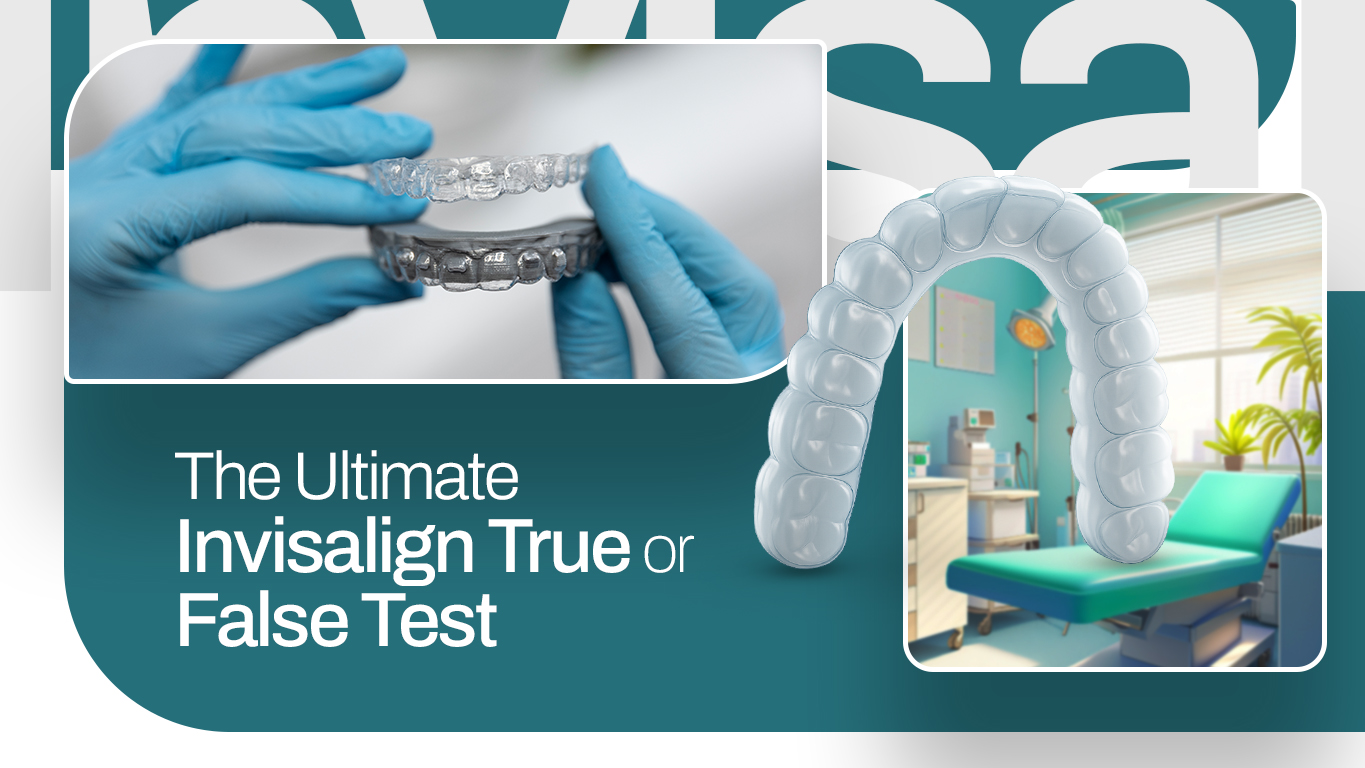Invisalign has revolutionized orthodontic treatment, offering a discreet alternative to traditional metal braces. However, with popularity comes misinformation. Whether you’re considering clear aligners or simply curious about this innovative treatment, it’s time to separate fact from fiction. Let’s put your Invisalign knowledge to the test with these common statements and reveal the truth behind each one.
Statement 1: “Invisalign is completely invisible.”
False – While Invisalign aligners are significantly more discreet than traditional braces, they’re not entirely invisible. The clear plastic trays are designed to be nearly invisible, but upon close inspection, people may notice a slight shine or outline around their teeth. Most people won’t notice them during normal conversations, making them an excellent choice for professionals and image-conscious individuals. The “invisible” aspect is more about being inconspicuous rather than literally unseen.
Statement 2: “You can eat anything you want with Invisalign.”
True – This is one of Invisalign’s greatest advantages. Unlike traditional braces that restrict your diet, Invisalign aligners are removable, allowing you to eat whatever you desire. Remove the aligners before meals and snacks, then brush your teeth and rinse the aligners before putting them back in. This freedom means no more avoiding popcorn, sticky candies, or crunchy foods that could damage traditional braces.
Statement 3: “Invisalign treatment takes much longer than traditional braces.”
False – Invisalign treatment typically takes 12 to 18 months for most cases, which is comparable to or often faster than traditional braces. The exact duration depends on the complexity of your case and how consistently you wear your aligners. Some minor corrections can be completed in as little as six months, while more complex cases might take up to two years. The key factor is wearing your aligners for the recommended 20-22 hours per day.
Statement 4: “Invisalign can only fix minor dental issues.”
False – Modern Invisalign technology can address a wide range of orthodontic problems, including overcrowding, gaps between teeth, overbites, underbites, crossbites, and open bites. While extremely severe cases might still require traditional braces or surgical intervention, Invisalign has expanded its capabilities significantly. Advanced features like attachments, buttons, and rubber bands allow orthodontists to achieve complex tooth movements that were once impossible with clear aligners.
Statement 5: “Invisalign is more expensive than traditional braces.”
Partially True – Invisalign treatment often costs slightly more than traditional braces, but the price difference has narrowed considerably. Costs vary based on treatment complexity, geographic location, and individual orthodontist pricing. Many dental insurance plans now cover Invisalign similarly to traditional braces, and flexible payment plans make treatment accessible. When considering the convenience, comfort, and aesthetic benefits, many patients find the investment worthwhile.
Statement 6: “You don’t need to wear retainers after Invisalign treatment.”
False – Like all orthodontic treatments, Invisalign requires retention to maintain results. After completing your aligner series, you’ll need to wear retainers to prevent your teeth from shifting back to their original positions. Initially, you might wear retainers full-time, then transition to nighttime wear. Some patients receive Vivera retainers, which are made from the same material as Invisalign aligners and offer superior durability.
Statement 7: “Invisalign aligners are uncomfortable and painful.”
False – While you may experience some pressure and mild discomfort when starting a new set of aligners, this is typically much less painful than traditional braces. The smooth plastic doesn’t irritate your cheeks and gums like metal brackets and wires can. Most patients adjust to each new aligner within a day or two. Any discomfort usually indicates that the treatment is working and your teeth are moving as planned.
Statement 8: “You can drink anything while wearing Invisalign aligners.”
False – You should only drink water while wearing your aligners. Other beverages, including coffee, tea, soda, and alcoholic drinks, can stain the aligners and increase the risk of tooth decay by trapping sugars and acids against your teeth. Hot beverages can also warp the plastic. If you want to enjoy other drinks, remove your aligners first, then clean your teeth before reinserting them.
Statement 9: “Invisalign requires fewer dental visits.”
True – Invisalign typically requires fewer office visits than traditional braces. Instead of monthly adjustments, most patients visit their orthodontist every 6-8 weeks for progress checks and to receive their next sets of aligners. Some practices even offer remote monitoring options, allowing you to check in virtually between appointments. This makes Invisalign particularly convenient for busy adults.
Statement 10: “Anyone can get Invisalign treatment.”
False – While Invisalign is suitable for most teens and adults, it’s not appropriate for everyone. Young children whose teeth are still developing may not be candidates. Additionally, patients with certain dental conditions, such as severe periodontal disease, may need to address these issues before beginning orthodontic treatment. A thorough consultation with a qualified orthodontist is essential to determine candidacy.
The Verdict: Knowledge is Power
Understanding the facts about Invisalign helps you make informed decisions about your orthodontic care. These clear aligners offer remarkable benefits for the right candidates, combining effectiveness with convenience and aesthetics.
If you’re considering Invisalign treatment, don’t let myths and misconceptions cloud your judgment. At Carrum Downs Dental, located at Shop T5, 100 Hall Road, Carrum Downs, our experienced team provides comprehensive Invisalign consultations and treatment. We’re open seven days a week from 9 AM to 5 PM, making it convenient to schedule your appointment around your busy lifestyle. Contact us today to discover if Invisalign is the right choice for achieving your perfect smile.
Conclusion –
Learn how Invisalign can correct your smile


